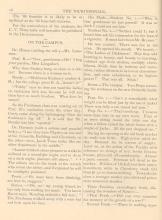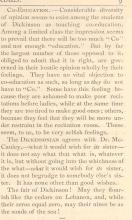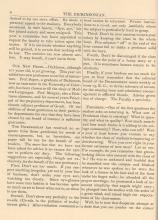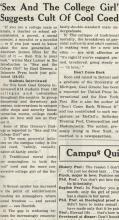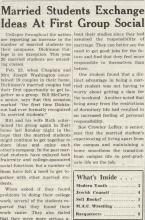Denny Ladies' Room Rights
In an editorial piece dated February 26, 1965, Joann Hansen expresses her concern witht he state of the women's powder room in Denny Hall. According to Hansen, the room is poorly lit, cold, the pipes dripp, and the women could hear rats crawling in the walls. Moroever, Hansen asserted that males often visit the powder room which does not allow the women a sense of privacy. Thus, Hansen argues that like the rest of Denny, the women's powder room should also be remodeled.




